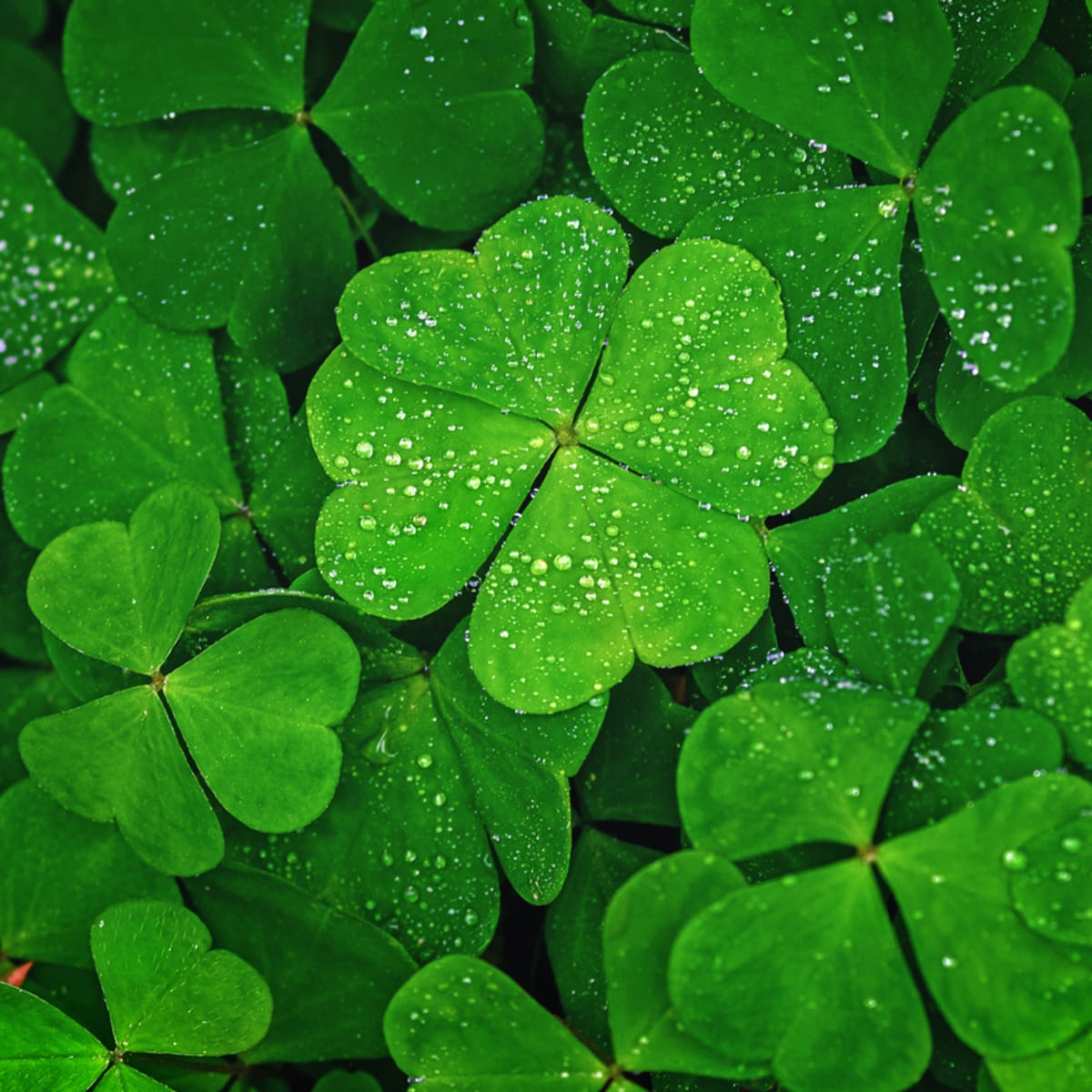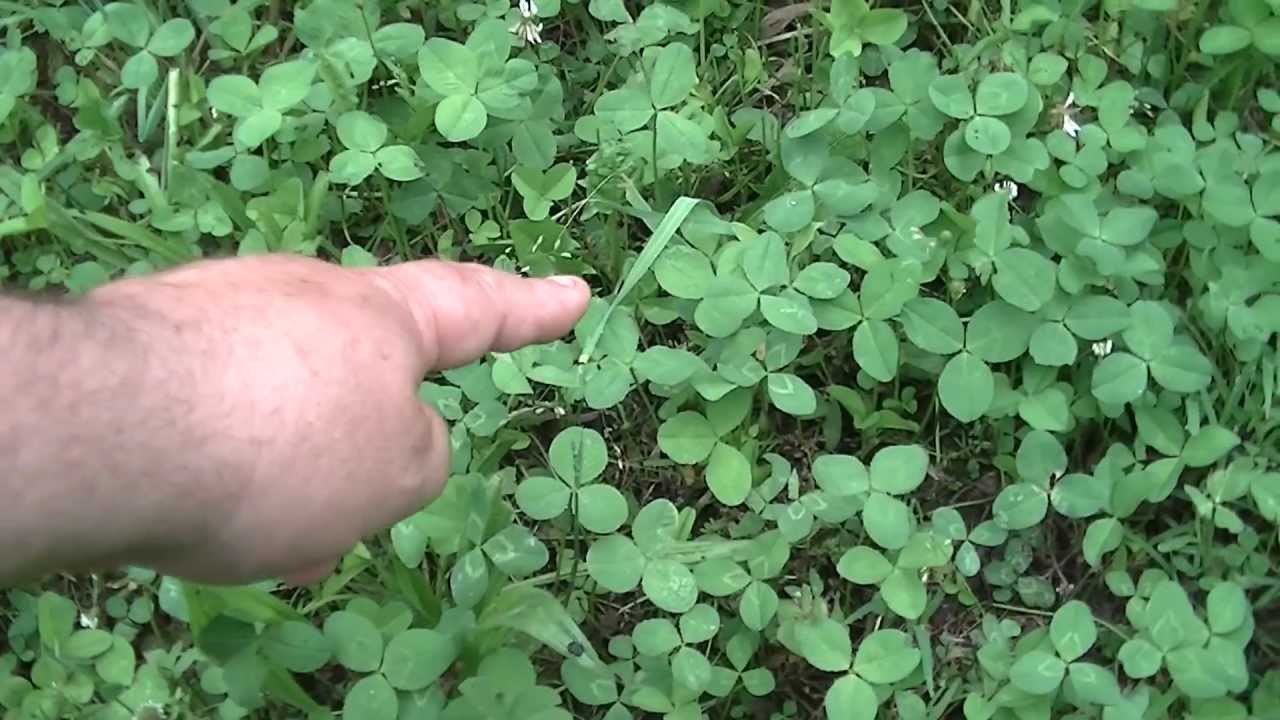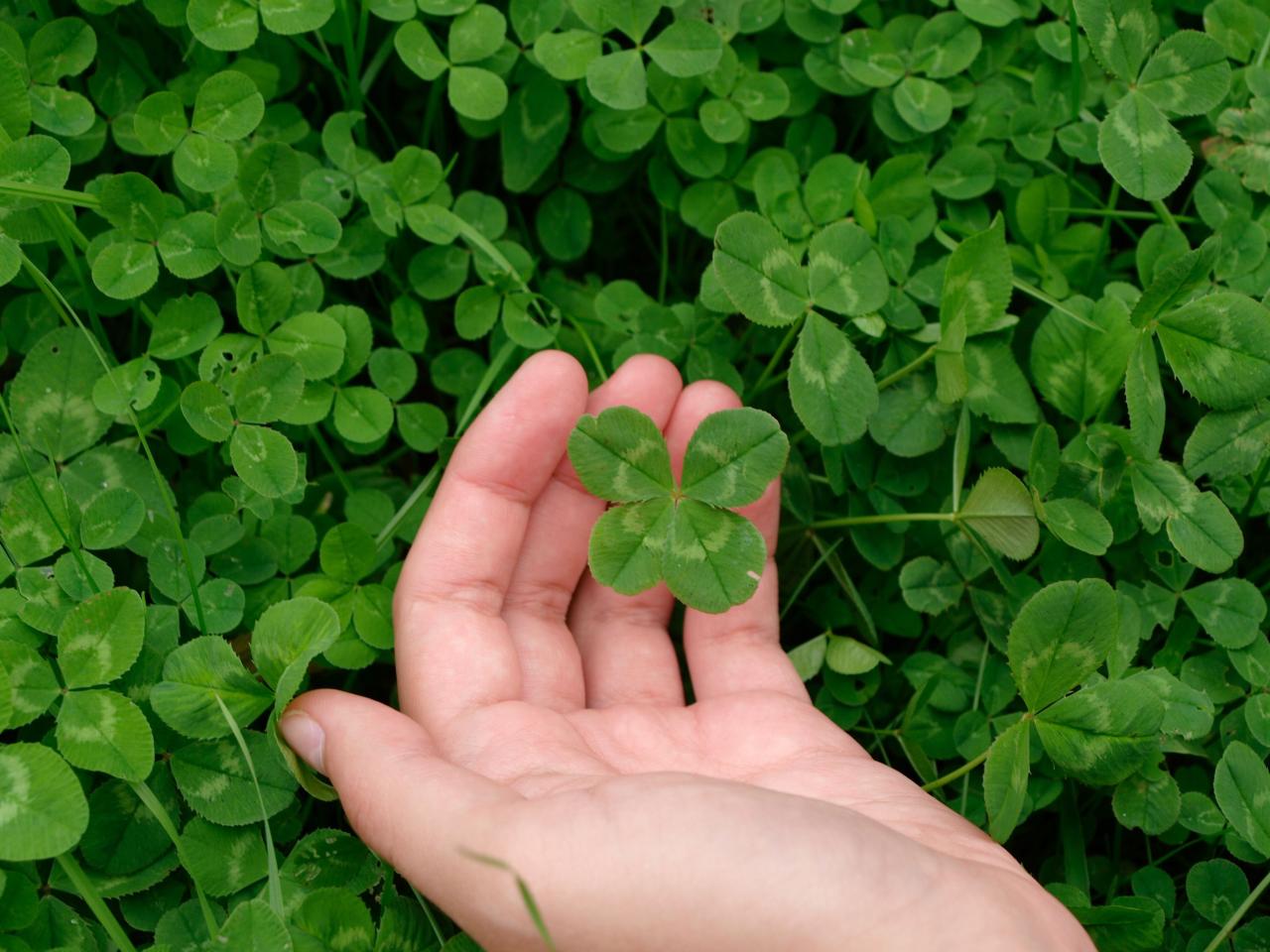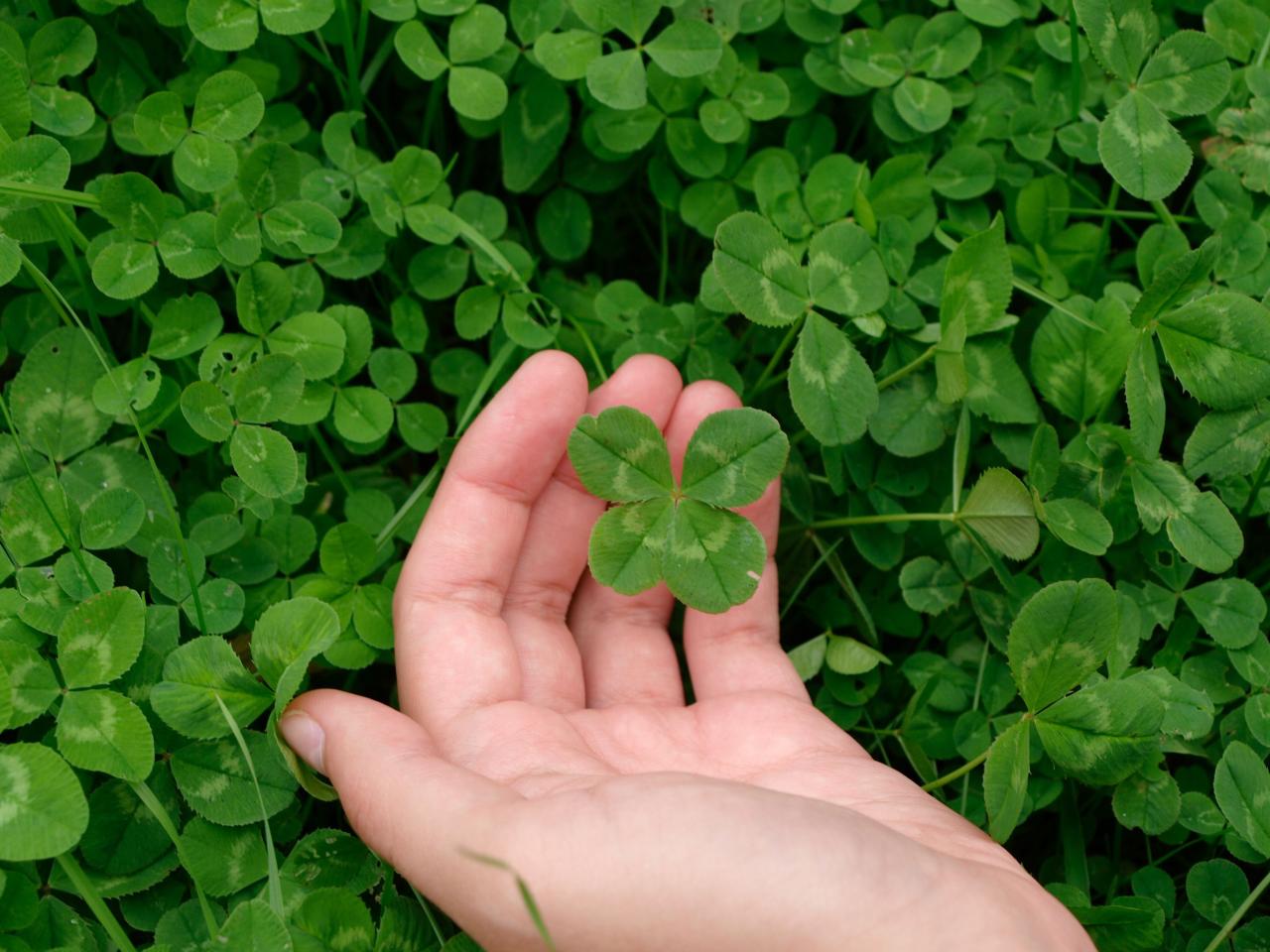The Best Techniques for Finding and Cultivating Four Leaf Clovers delves into the captivating world of this rare and sought-after botanical treasure. Beyond mere luck, there are proven methods to increase your chances of discovering a four-leaf clover, and even cultivating your own patch of these lucky charms.
This guide explores the genetic anomaly behind their existence, the best locations and strategies for finding them, and the secrets to nurturing four-leaf clovers for long-lasting enjoyment.
Unraveling the mystery of the four-leaf clover begins with understanding its genetic makeup. A rare mutation, occurring in a small percentage of clover plants, gives rise to the sought-after four-leaf configuration. This mutation, while random, can be influenced by factors such as environmental stress and soil conditions.
The guide then provides a comprehensive overview of the most effective techniques for finding four-leaf clovers, encompassing visual cues, systematic searching, and the ideal environments to explore. Finally, it unveils the secrets of cultivating four-leaf clovers, including optimal soil conditions, transplanting techniques, and even specific clover varieties known for their increased likelihood of producing four-leaf mutations.
Understanding Four Leaf Clovers

The four-leaf clover, a rare variation of the common three-leaf clover, has captivated human imagination for centuries. Its unusual appearance has led to numerous legends and superstitions, making it a symbol of good luck and fortune. Understanding the genetic basis for this unique trait and its rarity provides insight into the natural world and the enduring appeal of this seemingly ordinary plant.
While finding four-leaf clovers might seem like a game of chance, understanding the conditions that promote their growth can increase your odds. Just as you would optimize the environment for your columbine plants, ensuring proper soil conditions and adequate moisture is key to maximizing the chances of finding a lucky clover.
For instance, How to Maximize the Growth of Your Columbine Plants offers valuable insights on soil amendments and watering techniques that can be applied to your clover patch. Remember, a healthy clover patch is more likely to produce those rare four-leaf finds, so don’t neglect the basics of plant care.
The Genetic Basis for Four-Leaf Clovers
The four-leaf clover is a result of a genetic mutation that affects the development of the leaves. In most clover plants, the leaves develop in a pattern of three leaflets. However, in rare instances, a mutation in the plant’s genes can cause the development of an extra leaflet, resulting in a four-leaf clover.
The exact genetic mechanism behind this mutation is complex and not fully understood. However, it is believed to be influenced by a combination of genetic and environmental factors.
Rarity of Four-Leaf Clovers
The rarity of four-leaf clovers is a testament to the power of genetics and the intricate interplay of nature. While the exact probability of finding a four-leaf clover is difficult to determine and can vary depending on factors such as species and growing conditions, estimates suggest that it occurs in approximately 1 in 10,000 clover plants.
This means that for every 10,000 three-leaf clovers, there is likely to be only one four-leaf clover.
Cultural Significance and Symbolism
Four-leaf clovers have long held cultural significance and symbolism across various cultures. The association of the four-leaf clover with good luck is deeply ingrained in popular folklore and tradition. It is often believed that finding a four-leaf clover brings good fortune, prosperity, and protection.
While finding a four-leaf clover is often attributed to luck, cultivating a patch of these lucky charms requires patience and understanding of their growing conditions. Similar to the delicate beauty of columbine plants, which thrive in partial shade and well-drained soil, Columbine Plants: Expert Advice for Beautiful Blooms , four-leaf clovers also prefer moist, shady environments.
By mimicking these conditions, you can increase your chances of finding these lucky symbols and even encourage their growth in your own garden.
The four leaflets are often interpreted to represent faith, hope, love, and luck.
Finding Four Leaf Clovers
Finding a four-leaf clover is a lucky endeavor, but it takes more than just wishing upon a star. This section explores the most effective methods for locating these rare treasures, considering the environment, clover patch characteristics, and different searching techniques.
Searching for Four-Leaf Clovers in Different Environments, The Best Techniques for Finding and Cultivating Four Leaf Clovers
The ideal environment for finding four-leaf clovers varies depending on the type of clover. White clover, the most common variety, thrives in sunny, well-drained areas with fertile soil. Red clover, on the other hand, prefers slightly acidic soil and partial shade.
The best time to search for four-leaf clovers is during the spring and summer months when they are actively growing.
- Lawns:Lawns with a diverse mix of clover types are more likely to contain four-leaf clovers. Focus on areas with dense patches of clover, especially those that have been recently mowed or fertilized.
- Meadows:Meadows with a mix of clover types and grasses are ideal for searching. Look for areas with patches of clover that are undisturbed and have not been recently grazed.
- Forests:While not as common as in lawns and meadows, four-leaf clovers can also be found in forests. Look for areas with dappled sunlight and moist soil, where clover patches may thrive.
Characteristics of Clover Patches with Four-Leaf Clovers
The presence of four-leaf clovers is often associated with specific characteristics of the clover patch. These characteristics are often subtle, but with practice, they can become recognizable.
- Clover Density:Patches with a high density of clover plants are more likely to contain four-leaf clovers. The higher the density, the greater the chance of a genetic mutation that leads to four leaves.
- Clover Health:Healthy clover patches with lush, green leaves are more likely to produce four-leaf clovers. Healthy plants are more likely to have the resources to support genetic mutations.
- Clover Variety:While any type of clover can produce a four-leaf clover, white clover is the most common variety to have the mutation.
- Patch Size:Larger clover patches tend to have more four-leaf clovers.
Comparing Searching Methods
Different searching methods have varying degrees of effectiveness in finding four-leaf clovers.
- Systematic Searching:This method involves systematically scanning a clover patch, row by row, using a grid pattern. This method is effective for covering large areas and ensuring that no clover is missed. However, it can be time-consuming and may not be as effective as random searching in identifying the subtle cues that indicate the presence of four-leaf clovers.
- Random Searching:This method involves randomly scanning a clover patch, looking for anything that stands out. It can be a more efficient method, especially if you have a good eye for spotting four-leaf clovers. This method is often favored by experienced clover hunters.
- Using Visual Cues:This method involves looking for visual cues that indicate the presence of four-leaf clovers. These cues can include the shape of the clover leaves, the color of the leaves, and the overall appearance of the clover patch. This method requires practice and experience, but it can be very effective in identifying four-leaf clovers quickly.
Cultivating Four Leaf Clovers: The Best Techniques For Finding And Cultivating Four Leaf Clovers
Cultivating four-leaf clovers is a fascinating endeavor that can bring a touch of luck to your garden. While finding these rare mutations in the wild can be challenging, understanding the principles of clover growth and applying specific techniques can increase your chances of finding and even cultivating four-leaf clovers.
Selecting Clover Seeds
Choosing the right clover seeds is crucial for successful cultivation. White clover (Trifolium repens) is the most common variety used for lawns and gardens. This variety is known for its adaptability and tendency to produce four-leaf mutations. When selecting seeds, opt for those specifically labeled as “four-leaf clover” or “lucky clover.” These seeds are typically bred for their higher frequency of four-leaf mutations.
Preparing the Soil
Four-leaf clovers thrive in well-drained, fertile soil with a slightly acidic pH (6.0-6.5). Prepare the soil by removing any weeds or debris and incorporating organic matter like compost or manure. This will improve soil structure, drainage, and nutrient content, providing a healthy environment for clover growth.
Optimal Growing Conditions
Clover prefers full sun to partial shade. It requires consistent moisture but should not be allowed to become waterlogged. Regular watering, especially during dry periods, is essential for healthy growth. Fertilizing with a balanced fertilizer can help promote lush growth, but it’s crucial to avoid over-fertilizing, as this can lead to excessive leaf growth and reduce the frequency of four-leaf mutations.
Transplanting Four-Leaf Clovers
Once your four-leaf clovers have established themselves in a nursery or pot, you can transplant them to your desired location. Select a spot with suitable soil conditions and adequate sunlight. Gently dig a hole slightly larger than the root ball.
Place the clover plant in the hole, ensuring the root ball is level with the ground. Backfill the hole with soil, firming it gently around the plant. Water thoroughly to help the plant settle in its new environment.
Clover Varieties and Characteristics
Clover Variety |
Leaf Shape |
Leaf Color |
Frequency of Four-Leaf Mutations |
|---|---|---|---|
White Clover (Trifolium repens) |
Ovate, with a small notch at the tip |
Bright green |
1 in 10,000 |
Red Clover (Trifolium pratense) |
Ovate, with a slightly pointed tip |
Dark green |
1 in 10,000 |
Crimson Clover (Trifolium incarnatum) |
Ovate, with a slightly pointed tip |
Deep red |
1 in 10,000 |
Dutch Clover (Trifolium repens var. giganteum) |
Ovate, with a small notch at the tip |
Bright green |
1 in 10,000 |
Preserving Four Leaf Clovers

Preserving your lucky four-leaf clover is a wonderful way to keep its charm and meaning close. There are various methods you can use to preserve your clover, each offering a unique way to display and cherish your lucky find.
Methods for Preserving Four-Leaf Clovers
The most common methods for preserving four-leaf clovers are pressing, drying, and creating resin casts. These methods offer different approaches to preserving the clover’s shape and color.
- Pressing: This method involves flattening the clover between two absorbent materials, such as paper towels or blotting paper, under pressure. The pressure helps to remove moisture from the clover, preserving its shape and color.
- Drying: Similar to pressing, drying involves removing moisture from the clover. You can air dry the clover by placing it in a well-ventilated area, or you can use a dehydrator to speed up the process.
- Resin Casting: This method involves encapsulating the clover in resin, creating a durable and long-lasting preservation. Resin casting offers a unique and artistic way to preserve your clover.
Visual Guide for Preserving Four-Leaf Clovers
Here is a visual guide for preserving four-leaf clovers, ensuring their color and shape are maintained:
Pressing
- Gather Materials: You will need a four-leaf clover, two pieces of absorbent paper (such as blotting paper or paper towels), and a heavy object (like a book or a weight).
- Prepare the Clover: Gently clean the clover with a soft brush to remove any dirt or debris. Avoid using water, as it can damage the clover.
- Place the Clover: Lay one piece of absorbent paper on a flat surface. Place the clover on top of the paper, ensuring it is flat and spread out.
- Cover the Clover: Place the second piece of absorbent paper on top of the clover.
- Apply Pressure: Place the heavy object on top of the paper. Ensure the pressure is evenly distributed across the clover.
- Allow Time for Drying: Leave the clover under pressure for at least a week. The drying time may vary depending on the clover’s size and the humidity level.
- Check for Drying: After a week, check the clover for dryness. If it feels dry and brittle, it is ready for display.
Drying
- Gather Materials: You will need a four-leaf clover and a well-ventilated area or a dehydrator.
- Prepare the Clover: Gently clean the clover with a soft brush to remove any dirt or debris. Avoid using water, as it can damage the clover.
- Air Drying: Place the clover in a well-ventilated area, away from direct sunlight. Ensure the clover is not exposed to high humidity.
- Dehydrator Drying: If using a dehydrator, follow the manufacturer’s instructions. Set the temperature to low, usually between 95-115 degrees Fahrenheit.
- Monitor Drying: Monitor the drying process and adjust the drying time based on the clover’s size and the humidity level.
- Check for Drying: Once the clover feels dry and brittle, it is ready for display.
Resin Casting
- Gather Materials: You will need a four-leaf clover, resin casting kit (including resin, hardener, and mixing cups), gloves, and a mold.
- Prepare the Clover: Gently clean the clover with a soft brush to remove any dirt or debris. Avoid using water, as it can damage the clover.
- Prepare the Resin: Follow the resin kit’s instructions carefully. Mix the resin and hardener in the appropriate ratio, ensuring the mixture is thoroughly blended.
- Place the Clover in the Mold: Carefully place the clover in the mold, ensuring it is positioned as desired.
- Pour the Resin: Slowly pour the mixed resin into the mold, covering the clover completely. Avoid trapping air bubbles in the resin.
- Allow Curing: Allow the resin to cure according to the kit’s instructions. This usually takes 24-48 hours.
- Remove from Mold: Once the resin has cured, carefully remove the casting from the mold.
Tips for Displaying Preserved Four-Leaf Clovers
- Framing: Pressed or dried clovers can be framed and displayed as a cherished keepsake. Use a mat board with a neutral color to highlight the clover.
- Mounting: You can mount pressed or dried clovers on a card or a piece of paper. Use a clear adhesive to secure the clover to the mounting surface.
- Incorporating into Crafts: Preserved clovers can be incorporated into various crafts, such as jewelry, bookmarks, and paperweights.
Closure

Finding and cultivating four-leaf clovers is a rewarding pursuit that combines scientific understanding with a touch of luck. By understanding the factors that contribute to their existence and employing the techniques Artikeld in this guide, you can increase your chances of discovering these lucky charms and even nurture your own patch of four-leaf clovers.
Whether you seek the thrill of the hunt or the satisfaction of cultivating these botanical wonders, the journey itself is sure to be an engaging and memorable experience.
FAQ Guide
Are there any specific clover varieties that are more likely to produce four-leaf clovers?
Yes, some clover varieties are known for their increased frequency of four-leaf mutations. For example, the “White Dutch Clover” (Trifolium repens) and the “Crimson Clover” (Trifolium incarnatum) are often cited as varieties with a higher chance of producing four-leaf clovers.
What is the best time of year to search for four-leaf clovers?
The best time to search for four-leaf clovers is during the spring and summer months when clover plants are actively growing. This is when the mutation is most likely to occur and the leaves are at their most vibrant.
How long can I preserve a four-leaf clover?
The lifespan of a preserved four-leaf clover depends on the preservation method used. Pressing or drying can preserve the clover for several months to a year, while resin casts can last for many years.
